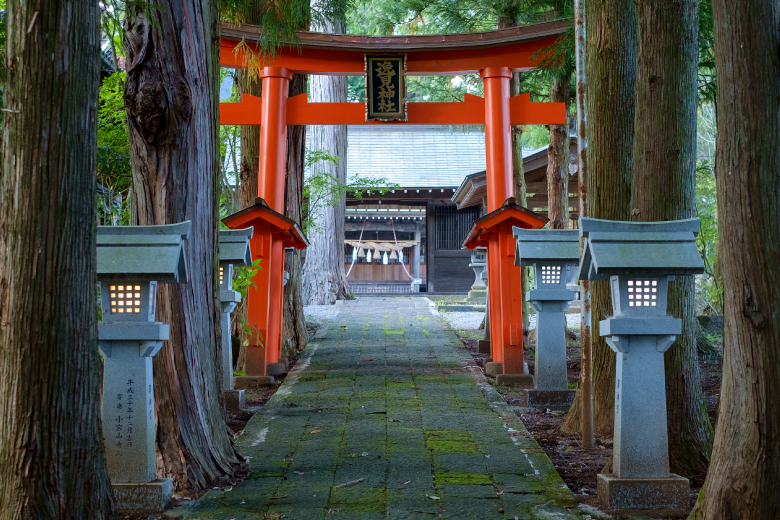Hemi-jinja Shrine’s exact date of construction is not known, but it has its origins when Shinra Saburo Yoshimitsu, founder of the Kai Genji Clan, enshrined the gods Hashimanshin and Suwa Myojin in a facility in Jonai and named it Hemi-jinja Shrine. It was transferred to its present location when Yoshimitsu’s grandson Hemi Kiyomitsu built Yato-jo Castle during the Ninpei Years (1151–1153). It has thereafter been worshipped by subsequent generations of Hemi.
A flood accompanying the sector collapse of the Yatsugatake Mountains in 1574 is said to have carried away all items that the Hemi and Takeda Clans contributed to the shrine. Massive stones still lay scattered on the grounds of the shrine as evidence of the sheer magnitude of the flood disaster.
The Yamato Kagura (Daitai Kagura) music and dance performance that is offered to Hemi-jinja Shrine is a designated Intangible Folk Cultural Property of Hokuto City.
A flood accompanying the sector collapse of the Yatsugatake Mountains in 1574 is said to have carried away all items that the Hemi and Takeda Clans contributed to the shrine. Massive stones still lay scattered on the grounds of the shrine as evidence of the sheer magnitude of the flood disaster.
The Yamato Kagura (Daitai Kagura) music and dance performance that is offered to Hemi-jinja Shrine is a designated Intangible Folk Cultural Property of Hokuto City.
COURSE MAP
Let's go to the next spot!
- 0.7km / 21 on foot Minutes
- 04Hokuto Archaeological Museum

